
The law of conservation of energy states that the total energy within an isolated system remains constant. This means that energy cannot be created or destroyed; it can only change from one form to another. For instance, consider a roller coaster ride. As the coaster climbs up a hill, it gains potential energy due to its increased height. As it descends, the potential energy is converted into kinetic energy, resulting in thrilling speed. Throughout the entire ride, the total energy, including potential and kinetic energy, remains constant. This law of conservation of energy applies to all systems, from simple everyday occurrences to complex interactions in the universe.
The equation for the law of conservation of energy can be represented as:
$$E_{initial} = E_{final}$$In mathematical terms, this can be expanded to include different forms of energy, such as:
$$KE_{initial} + PE_{initial} + E_{other, initial} = KE_{final} + PE_{final} + E_{other, final}$$where KE is kinetic energy, PE is potential energy, and Eother includes other forms of energy such as thermal energy. This equation ensures that the sum of all forms of energy at the beginning of a process is equal to the sum at the end, illustrating the transformation and transfer of energy within the system without any loss or gain.
Examples
Light fixture

A light fixture, such as an incandescent bulb, demonstrates the law of conservation of energy. When an electric current passes through the filament in the bulb, electrical energy is transformed into thermal energy, causing the filament to heat up. The heated filament then emits light, converting thermal energy into radiant energy. Throughout this process, the law of conservation of energy ensures that the total energy in the system remains constant, even as it undergoes transformations between electrical, thermal, and radiant energy forms.
Dry wood
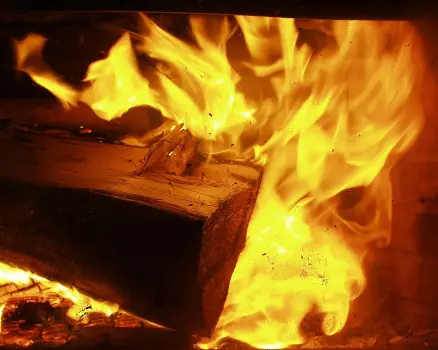
The combustion of dry wood adheres to the law of conservation of energy. As wood burns, potential chemical energy stored in the bonds of the molecules is released in the form of heat and light. The initial potential energy in the wood is transformed into thermal energy, illuminating the surroundings. According to the law of conservation of energy, the total energy remains constant in the system, even though it undergoes a transformation from chemical potential energy to thermal and radiant energy during the combustion process.
Loudspeaker
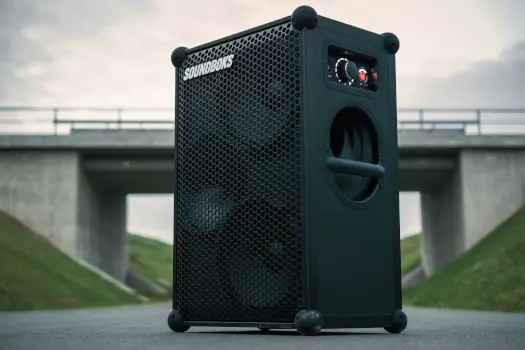
A loudspeaker operates based on the law of conservation of energy. An electrical signal, representing sound, is converted into kinetic energy as the speaker diaphragm vibrates. The kinetic energy of the moving diaphragm results in the production of sound waves, which carry away the energy as sound energy in the surrounding air. Despite the transformation between electrical, kinetic, and sound energy, the total energy in the system is conserved in accordance with the law of conservation of energy.
Food

The consumption of food involves the law of conservation of energy. The potential chemical energy stored in the bonds of the food molecules is converted into various forms of energy through digestion and metabolism. This includes the release of thermal energy, which contributes to maintaining body temperature, and the conversion of chemical energy into kinetic energy for bodily functions and activities. Despite the transformations in energy forms within the body, the law of conservation of energy dictates that the total energy derived from the food remains constant.
Chair

When pushing a chair with a hand, the law of conservation of energy is at play. The potential energy stored in the body of the person is transferred to the chair, imparting kinetic energy to it. Friction between the chair and the floor converts some of this kinetic energy into thermal energy. Despite the transformations between potential and kinetic energy, and the dissipation of some energy as heat due to friction, the total energy in the system remains constant in accordance with the law of conservation of energy.
Car accident

In a car accident, the law of conservation of energy is evident. The initial kinetic energy of the moving vehicles is transformed into various forms of energy during the collision. The kinetic energy is converted into deformation energy as the vehicles crumple, and there may be sound energy produced from the impact. Additionally, some of the energy may be dissipated as heat. According to the law of conservation of energy, the total energy in the system (kinetic, potential, and other forms) remains constant, even though it may change its form during the collision.
Torch
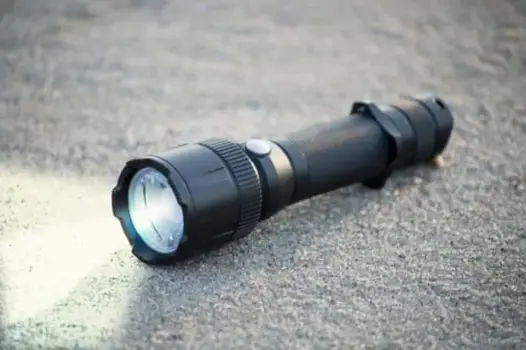
A flashlight operates in accordance with the law of conservation of energy. When the flashlight is turned on, electrical energy from the batteries is converted into radiant energy in the form of light. The electric current passing through the bulb’s filament heats it up, causing it to emit light. The law of conservation of energy ensures that the total energy in the system remains constant, despite the transformation from electrical energy to radiant energy. The flashlight demonstrates the conservation principle as it efficiently converts electrical energy into visible light without a net loss or gain of energy in the process.
Ball

As a ball rolls down a ramp, the law of conservation of energy comes into play. Initially, the ball possesses gravitational potential energy due to its height on the ramp. As it rolls downward, this potential energy is converted into kinetic energy, representing the motion of the ball. Despite some energy being lost to friction and air resistance, the total mechanical energy (sum of potential and kinetic energy) in the system is conserved. The law of conservation of energy ensures that the total energy remains constant throughout the ball’s descent on the ramp.
Microwave oven

The operation of a microwave oven follows the law of conservation of energy. When food is placed inside the oven, electrical energy is converted into electromagnetic waves, specifically microwaves. These microwaves penetrate the food, causing water molecules to vibrate and generate heat through friction. The potential electrical energy is transformed into thermal energy, effectively cooking the food. Despite some energy losses, the law of conservation of energy ensures that the total energy within the system remains constant, highlighting the efficiency of the microwave oven in converting electrical energy into heat.
Dynamite
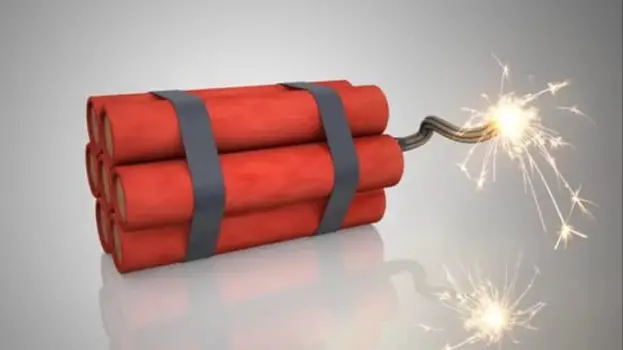
The detonation of dynamite involves the release of chemical potential energy stored in its explosive compounds. As dynamite detonates, chemical reactions rapidly release energy in the form of heat, light, sound, and a shockwave. While the transformation of chemical potential energy results in a highly dynamic and destructive process, the law of conservation of energy ensures that the total energy within the system (dynamite, surrounding air, and surroundings) remains constant, emphasizing the overall equilibrium in the system.
Mango
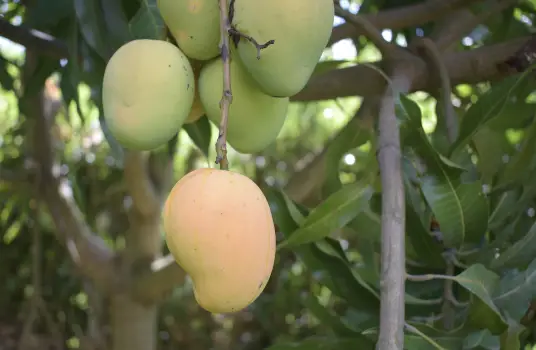
A fruit like a mango hanging on a tree branch adheres to the law of conservation of energy. The potential energy of the mango is related to its height above the ground. As the fruit ripens and falls from the branch, the potential energy is converted into kinetic energy during its descent. While there may be some energy losses due to air resistance and other factors, the total mechanical energy in the system is conserved. The law of conservation of energy governs the transformation of potential energy into kinetic energy as the mango falls from the tree.
Drum
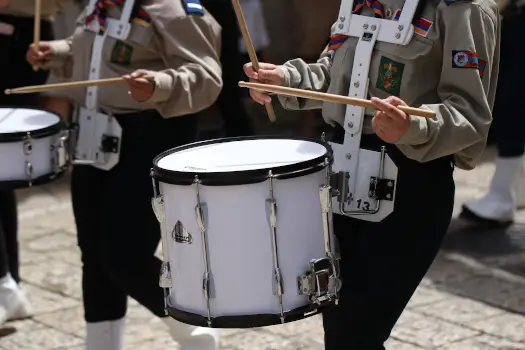
When a drum is played, the law of conservation of energy is at play. The potential energy stored in the drumhead due to its initial position is converted into kinetic energy as it is struck. The kinetic energy results in vibrations, producing sound waves. Although some energy is lost to heat and sound dissipation, the total energy within the system, including the drum, drumstick, and air, remains constant. The law of conservation of energy ensures that the initial energy imparted to the drum is transformed into sound without a net loss of energy.
Light bulb
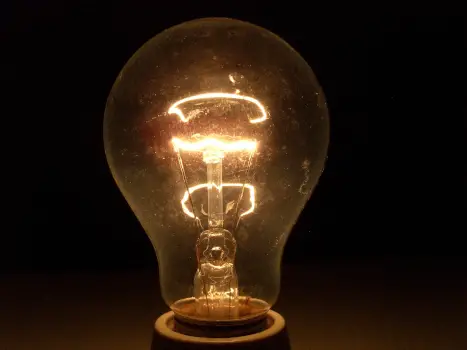
A light bulb operates based on the law of conservation of energy. When an electric current flows through the filament of a light bulb, electrical energy is converted into thermal energy, causing the filament to heat up. The heated filament emits light, converting thermal energy into radiant energy. Despite the transformation between electrical, thermal, and radiant energy, the law of conservation of energy ensures that the total energy in the system remains constant. The light bulb illustrates the efficient conversion of electrical energy into visible light.
Generator
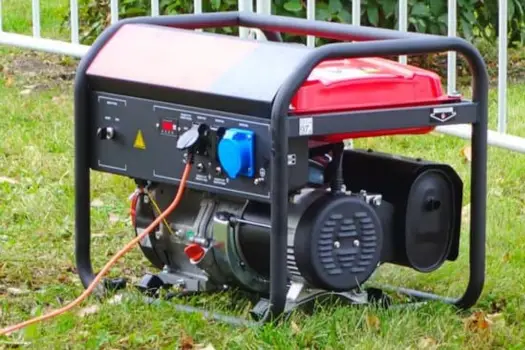
A generator exemplifies the law of conservation of energy in the conversion of mechanical energy into electrical energy. When a generator is turned, typically by a turbine in a power plant, mechanical energy is imparted to the generator. This mechanical energy is then transformed into electrical energy through electromagnetic induction. The law of conservation of energy ensures that the total energy in the system is conserved during this conversion process. Generators play a crucial role in electricity generation by efficiently converting various forms of mechanical energy into electrical energy.
Hydropower
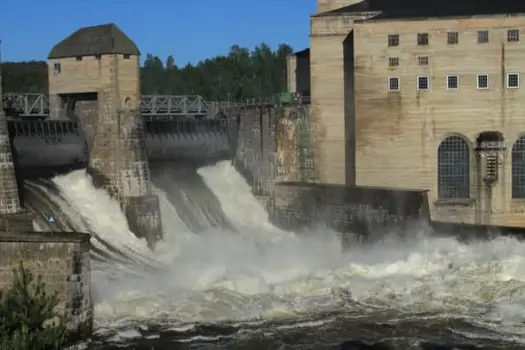
The generation of hydropower abides by the law of conservation of energy. As water flows or falls, it possesses gravitational potential energy. In a hydropower plant, the kinetic energy of the moving water is harnessed by turbines, converting it into mechanical energy. The mechanical energy is then transformed into electrical energy. Despite some energy losses due to friction and other factors, the law of conservation of energy ensures that the total energy in the system remains constant. Hydropower exemplifies the efficient conversion of gravitational potential energy into electrical energy.
Nuclear power plant
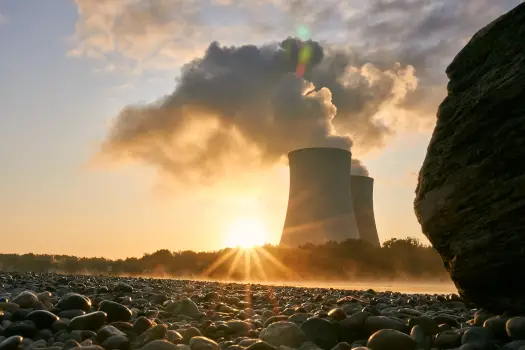
In a nuclear power plant, the law of conservation of energy governs the conversion of nuclear energy into electrical energy. The potential energy stored in atomic nuclei is released through nuclear fission reactions. This released energy is converted into thermal energy, which then generates steam. The kinetic energy of the steam is utilized to turn turbines, ultimately producing electrical energy. Throughout these energy transformations, the law of conservation of energy ensures that the total energy in the system remains constant, emphasizing the efficient conversion of nuclear potential energy into electricity.
Hand rubbing

When hands are rubbed together, the law of conservation of energy is evident. The kinetic energy generated by the friction between the hands transforms into thermal energy, resulting in warmth. Although some energy is dissipated as heat to the surroundings, the total energy within the system (hands and surrounding air) remains constant. Hand rubbing illustrates the conversion of mechanical energy into thermal energy while adhering to the law of conservation of energy.
Fossil fuel
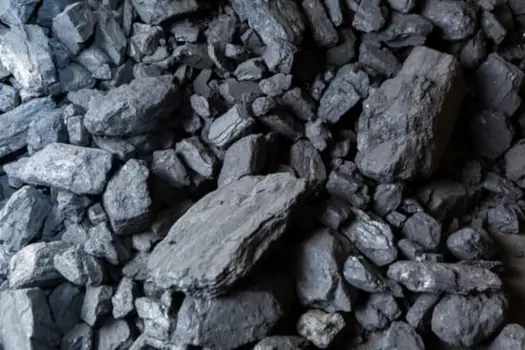
The use of fossil fuels, such as coal, oil, and natural gas, involves the law of conservation of energy. These fuels store chemical potential energy formed over millions of years through the decomposition of organic matter. When burned, the chemical energy is released as thermal energy, which is harnessed to produce electricity or perform mechanical work. Despite some energy losses as heat, the law of conservation of energy dictates that the total energy within the system (fossil fuel, combustion process, and surroundings) remains constant. Fossil fuel utilization exemplifies the conversion of ancient chemical potential energy into useful energy forms.
Moving bike

Riding a bike in a hill area demonstrates the law of conservation of energy. As the bike ascends the hill, the cyclist imparts kinetic energy to the bike, converting their potential energy into kinetic energy. When descending, the potential energy gained during the ascent is transformed back into kinetic energy, influencing the bike’s speed. Despite energy losses due to factors like air resistance and friction, the law of conservation of energy ensures that the total mechanical energy within the system (bike, cyclist, and surroundings) is conserved during the uphill and downhill segments.
Electric motor
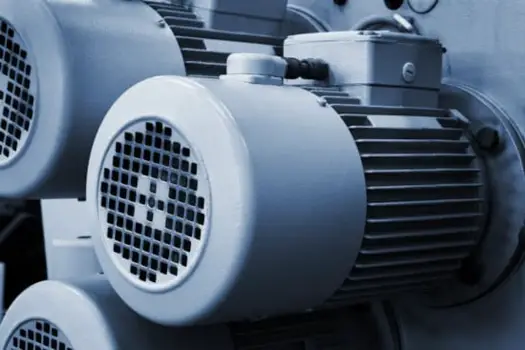
An electric motor converts electrical energy into mechanical energy, adhering to the law of conservation of energy. When an electric current flows through the motor, it interacts with a magnetic field, resulting in rotational motion. The electrical energy is transformed into kinetic energy, driving the motor’s mechanical components. Despite some energy losses as heat due to factors like friction, the law of conservation of energy ensures that the total energy within the system (electricity, motor, and surroundings) is conserved during the conversion process. Electric motors are pivotal devices in various applications, showcasing the efficient utilization of electrical energy to perform mechanical work.
Photosynthesis

Photosynthesis, the process by which plants convert light energy into chemical energy, aligns with the law of conservation of energy. Solar energy is absorbed by chlorophyll in plant cells, initiating a series of chemical reactions that convert light energy into chemical potential energy stored in glucose molecules. Despite some energy losses during the process, the law of conservation of energy ensures that the total energy within the system (plants, sunlight, and surroundings) is conserved. Photosynthesis is a prime example of the conversion of radiant energy into chemical potential energy within the constraints of this conservation principle.
Mobile phone

The operation of a mobile phone involves the law of conservation of energy. When a mobile phone is turned on, electrical energy from the battery is converted into various forms of energy. The display emits radiant energy in the form of light, the processor utilizes electrical energy for computations, and the speaker produces sound energy. While there are energy losses as heat during these processes, the law of conservation of energy dictates that the total energy within the system (battery, mobile phone components, and surroundings) is conserved. Mobile phones demonstrate the diverse and efficient conversion of electrical energy into useful energy forms for communication and functionality.
Newton’s cradle
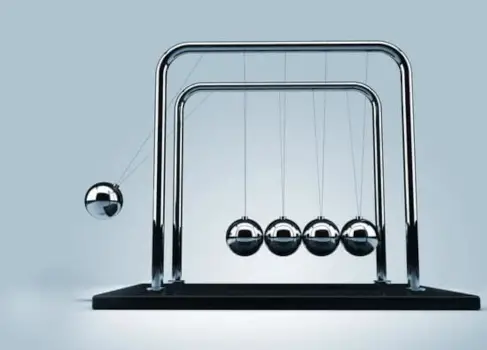
Newton’s cradle exemplifies the law of conservation of energy in a mechanical system. When one of the metal spheres is lifted and released, it gains gravitational potential energy. As it swings downward and strikes the stationary spheres, the kinetic energy is transferred through the chain, causing the last sphere to swing upward. Despite some energy losses due to air resistance and friction, the law of conservation of energy ensures that the total mechanical energy within the system (spheres, strings, and surroundings) remains constant. Newton’s cradle showcases the efficient transfer of kinetic and potential energy within a closed system.
Practice problems
Problem #1
A 10 kg block, initially at rest, is located on the edge of a hill at a height of 40 m. The block falls down the hill. Calculate the velocity of the block when it is at a height of 10 m. Take the value of gravitational acceleration as g = 9.81 m/s2.
Solution
Given data:
- Mass of a block, m = 10 kg
- Initial velocity of a block, vi = 0 m/s (because, a block is at rest)
- Initial height of a block, hi = 40 m
- Final velocity of a block, vf = ?
- Final height of a block, hf = 10 m
- Gravitational acceleration, g = 9.81 m/s2
Applying the formula:
- KEi + Ui = KEf + Uf
- ½ m vi2 + m g hi = ½ m vf2 + m g hf
- ½ vi2 + g hi = ½ vf2 + g hf
- 0 + (9.81 × 40) = ½ vf2 + (9.81 × 10)
- 392.4 = ½ vf2 + 98.1
- ½ vf2 = 294.3
- vf2 = 588.6
- vf = 24.26 m/s
Therefore, the velocity of a block at a height of 10 m is 24.26 m/s.
Problem #2
A basketball player throws a 500 g basketball from a height of 0.5 m to a height of 2.5 m. If the initial velocity of the basketball is 0 m/s, calculate the velocity of the basketball when it reaches a height of 2.5 m. Take the value of gravitational acceleration as g = 9.81 m/s2.
Solution
Given data:
- Mass of a basketball, m = 500 gm = 0.5 kg
- Initial height of a basketball, hi = 0.5 m
- Final height of a basketball, hf = 2.5 m
- Initial velocity of a basketball, vi = 0 m/s
- Final velocity of a basketball, vf = ?
- Gravitational acceleration, g = 9.81 m/s2
Applying the formula:
- KEi + Ui = KEf + Uf
- ½ m vi2 + m g hi = ½ m vf2 + m g hf
- ½ vi2 + g hi = ½ vf2 + g hf
- 0 + (9.81 × 0.5) = ½ vf2 + (9.81 × 2.5)
- 4.905 = ½ vf2 + 24.525
- ½ vf2 = 19.62
- vf2 = 39.24
- vf = 6.26 m/s
Therefore, the velocity of a basketball at a height of 2.5 m is 6.26 m/s.
Problem #3
A 15 kg stone, initially at rest, is situated on the edge of a hill at a height of 70 m. The stone falls down the hill. What is the velocity of the stone when it is at a height of 15 m before hitting the ground? Take the value of gravitational acceleration as g = 9.81 m/s2.
Solution
Given data:
- Mass of a stone, m = 15 kg
- Initial velocity of a stone, vi = 0 m/s (because, a stone is at rest)
- Initial height of a stone, hi = 70 m
- Final velocity of a stone, vf = ?
- Final height of a stone, hf = 15 m
- Gravitational acceleration, g = 9.81 m/s2
Applying the formula:
- KEi + Ui = KEf + Uf
- ½ m vi2 + m g hi = ½ m vf2 + m g hf
- ½ vi2 + g hi = ½ vf2 + g hf
- 0 + (9.81 × 70) = ½ vf2 + (9.81 × 15)
- 686.7 = ½ vf2 + 147.15
- ½ vf2 = 539.55
- vf2 = 1079.1
- vf = 32.84 m/s
Therefore, the velocity of a stone at a height of 15 m is 32.84 m/s.
Problem #4
A 20 g kite is flying in the sky at a height of 50 m above the ground and is descending with a velocity of 1 m/s. Calculate the velocity of the kite when it is at a height of 5 m. Take the value of gravitational acceleration as g = 9.81 m/s2.
Solution
Given data:
- Mass of a kite, m = 20 gm = 0.02 kg
- Initial height of a kite, hi = 50 m
- Initial velocity of a kite, vi = -1 m/s (descending, so negative)
- Final velocity of a kite, vf = ?
- Final height of a kite, hf = 5 m
- Gravitational acceleration, g = 9.81 m/s2
Applying the formula:
- KEi + Ui = KEf + Uf
- ½ m vi2 + m g hi = ½ m vf2 + m g hf
- ½ vi2 + g hi = ½ vf2 + g hf
- [½ × (-1)2] + (9.81 × 50) = ½ vf2 + (9.81 × 5)
- 0.5 + 490.5 = ½ vf2 + 49.05
- 491 = ½ vf2 + 49.05
- ½ vf2 = 441.95
- vf2 = 883.9
- vf = 29.73 m/s
Therefore, the velocity of a kite at a height of 5 m is 29.73 m/s.
More topics
- Law of conservation of energy
- Newton’s law of universal gravitation
- Newton’s law of cooling
- Coulomb’s law
- Snell’s law
- Ohm’s law
- Hooke’s law
External links
- https://education.nationalgeographic.org/resource/resource-library-conservation-energy-and-mass/
- https://examples.yourdictionary.com/law-of-conservation-of-energy-examples.html
- https://www.albert.io/blog/the-law-of-conservation-of-energy/
- https://sciencenotes.org/law-of-conservation-of-energy/
- https://www.britannica.com/science/conservation-of-energy
- https://www.khanacademy.org/science/hs-physics/x215e29cb31244fa1:introduction-to-energy/x215e29cb31244fa1:intro-to-energy/v/law-of-conservation-of-energy
- https://www.thoughtco.com/law-of-conservation-of-energy-605849
Deep
Learnool.com was founded by Deep Rana, who is a mechanical engineer by profession and a blogger by passion. He has a good conceptual knowledge on different educational topics and he provides the same on this website. He loves to learn something new everyday and believes that the best utilization of free time is developing a new skill.
